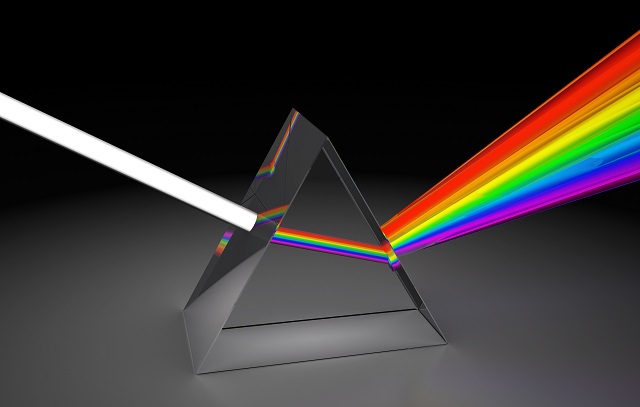Knowledge, Information and Experience
Uses of Prisms:
Mostly used in telescopes, periscopes and microscopes, scientists also use prisms in experiments that help them study the reaction of the human eye to light. Prisms constitute any three-dimensional shape with two faces of the same size and shape and parallelogram sides. The uses of prisms run a large gamut, though the use of light reflecting, and refracting prisms relate almost exclusively to optical studies. In a general sense, prisms play a part in many fields, including architecture.
Ophthalmology and Prisms
In the science dedicated to the study and treatment of eye diseases, ophthalmologists have used prisms since the 19th century to diagnose and treat many diseases of the eye, including esotropia, exotropia, nystagmus and amblyopia. When diagnosing eye diseases or deficiencies, ophthalmologists employ prism-refracted light to exam different parts of the eye for problems. Prisms used to treat disease help redirect light entering the eye to enhance the vision of the patient. Prisms also figure in the construction of corrective vision lenses for individuals suffering from certain diseases of the eye or specific types of vision deficiencies.
Telescopes, Cameras, Microscopes and Periscopes
Prisms figure prominently in the construction of multiple optical instruments because of its ability to bend and manipulate light. Binoculars often use Porro prisms — invented in 1850 and named for its inventor Ignazio Porro — a single unit built from two prisms that pushes light back in the direction from which it came while vertically and horizontally inverting it. Other optical instruments that use prisms include telescopes, cameras, microscopes and even submarine periscopes. Telescopes use multiple prisms in a single unit as a means of manipulating light traveling great distances to meet the eye.
Prism Shapes in Architecture
Light-manipulating prisms figure in architectural projects and are typically used during construction and design. Prisms as a shape also appear commonly in architecture. Architects in Sweden, for example, use triangular prisms as a common construction design as the slopes of the building’s shape cause snow to shed rather than accumulate. The first skyscrapers were nothing more than giant rectangular prisms while rectangular, triangular and even hexagonal prisms figure into contemporary architecture projects such as the Petronas Towers in Malaysia.
Scientific Experiment Uses
Scientists utilize prisms to study the nature of light and human perception of light. When studying the human eye using prisms, scientists examine the connections between the eye and the brain, and the general physics of light movement, speed and qualities. Science teachers use prisms in such experiments to teach children about the properties of light. Isaac Newton, the discoverer of gravity, used a prism and the light of the sun when concluding that white light is comprised of all colors in the visible spectrum.
Tags: Our Worldview










